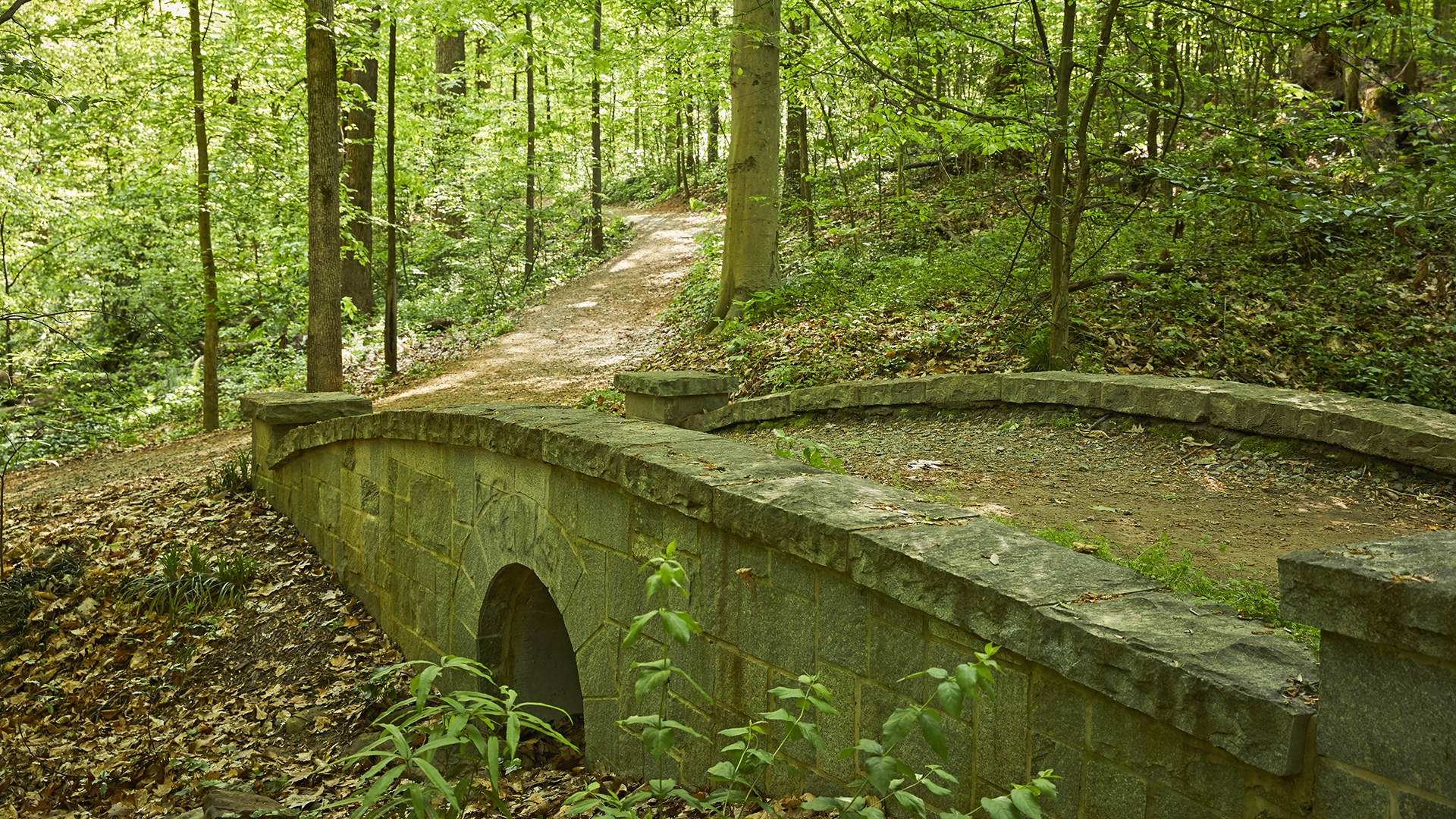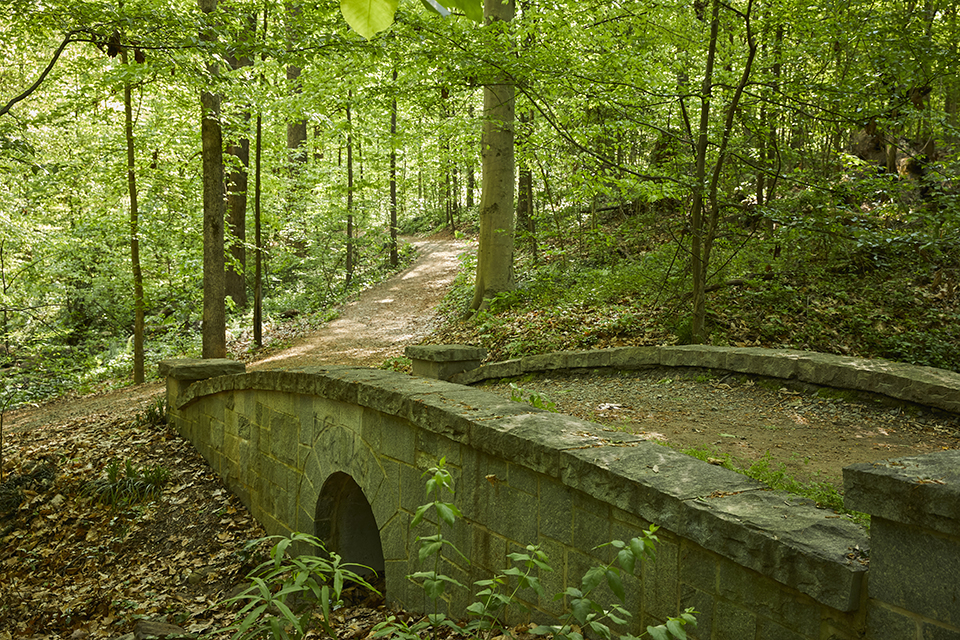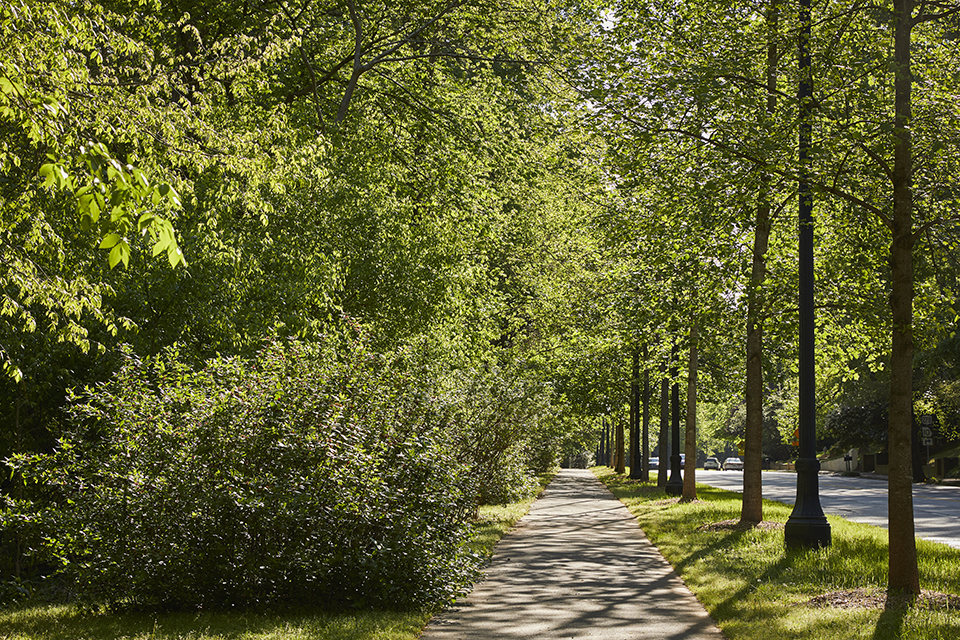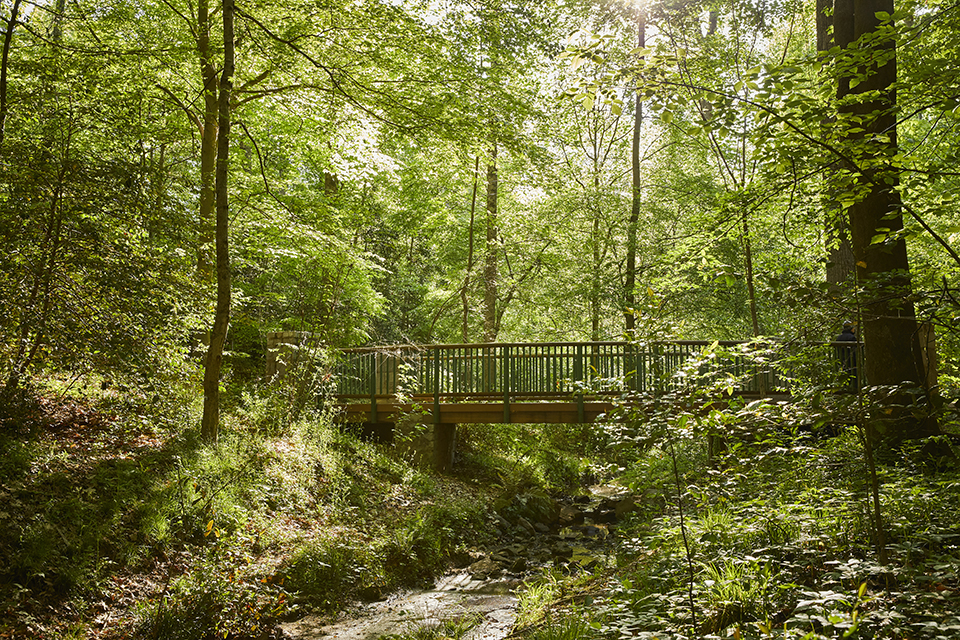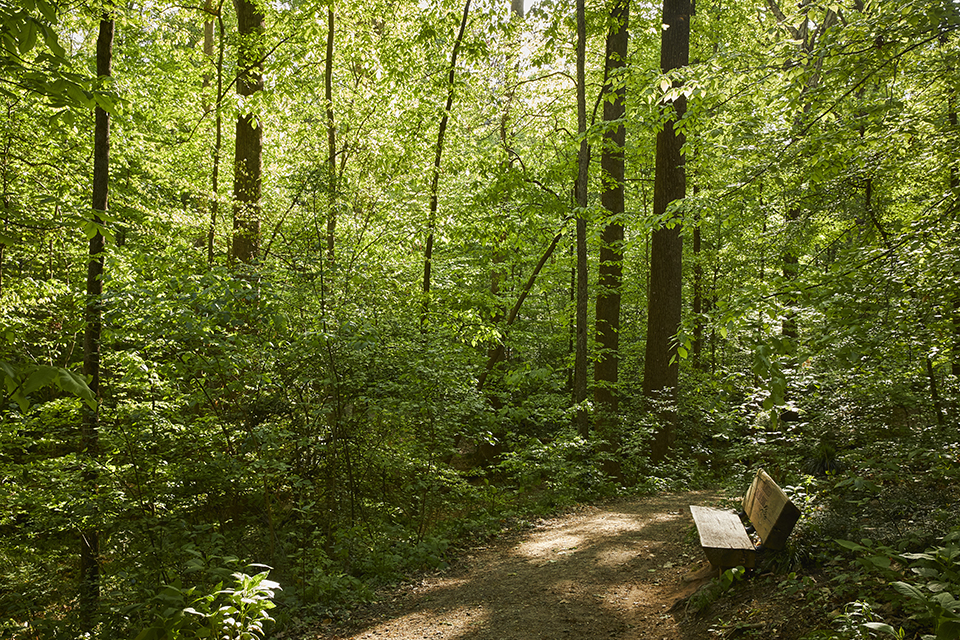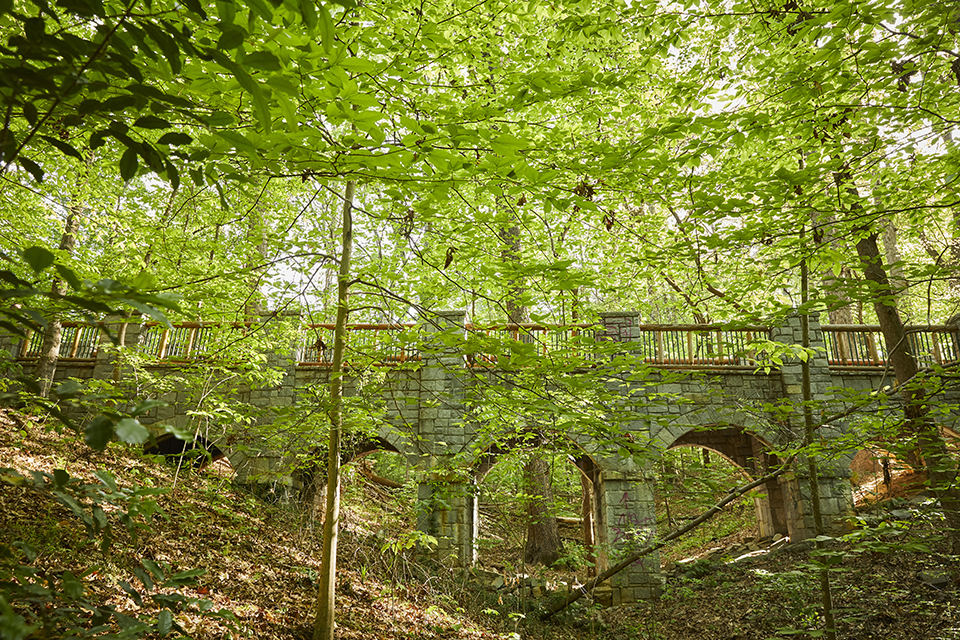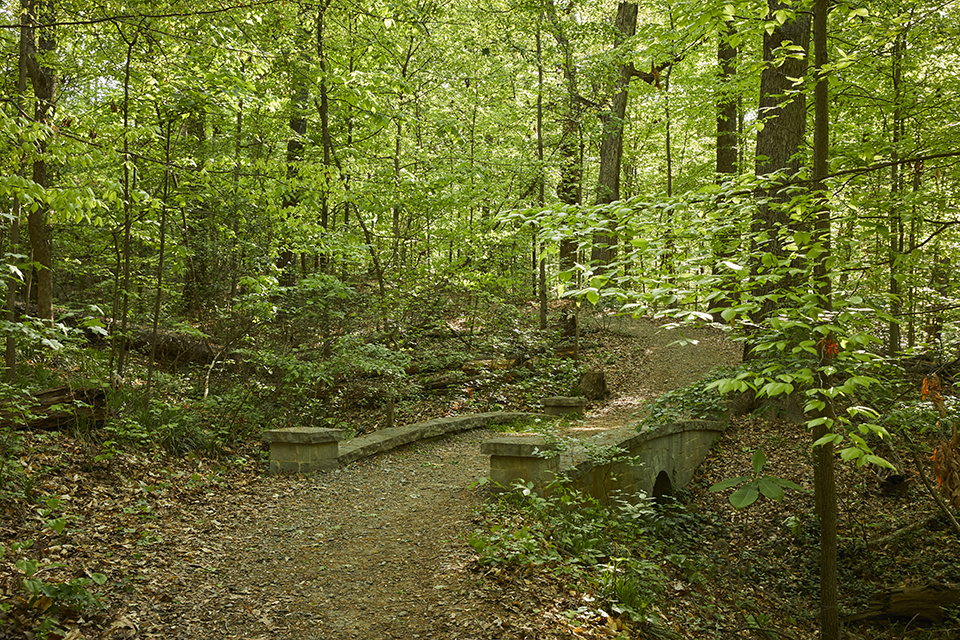The largest park within the Druid Hills subdivision, the last residential community designed by Olmsted, Sr., and the only subdivision in which all three Olmsted were involved, Deepdene Park has steep perimeter edges that slope towards a tributary of the Peavine Creek. In recent years, compounding drainage issues have resulted in significant erosion, threatening both the park and areas downstream.
History
In the late nineteenth century, Atlanta developer Joel Hurt recognized the need for new communities to serve the city’s growing population, which had tripled between 1870 and 1890. Hurt, responsible for the city’s first streetcar suburb, Inman Park, purchased land northeast of the city in 1890 and enlisted Fredrick Law Olmsted, Sr., of F.L. Olmsted & Co., to layout a Picturesque residential community. The landscape architect had recently been hired to design the grounds of George Vanderbilt’s Biltmore estate and, as he expressed in an 1894 letter, wanted his firm to “have an established ‘good will’ in the south.” This would be Olmsted, Sr.’s, last major community design.
For Druid Hills, Olmsted, Sr., worked with John Charles Olmsted on two plans, which were revealed in 1893. In the second plan “Ponce de Leon Parkway,” a divided, curvilinear avenue following existing topographical features, serves as the community’s central spine. The proposed parkway was interlaced with six linked public parks, reimagining the traditional village green into a linear, two-mile-long Picturesque experience.
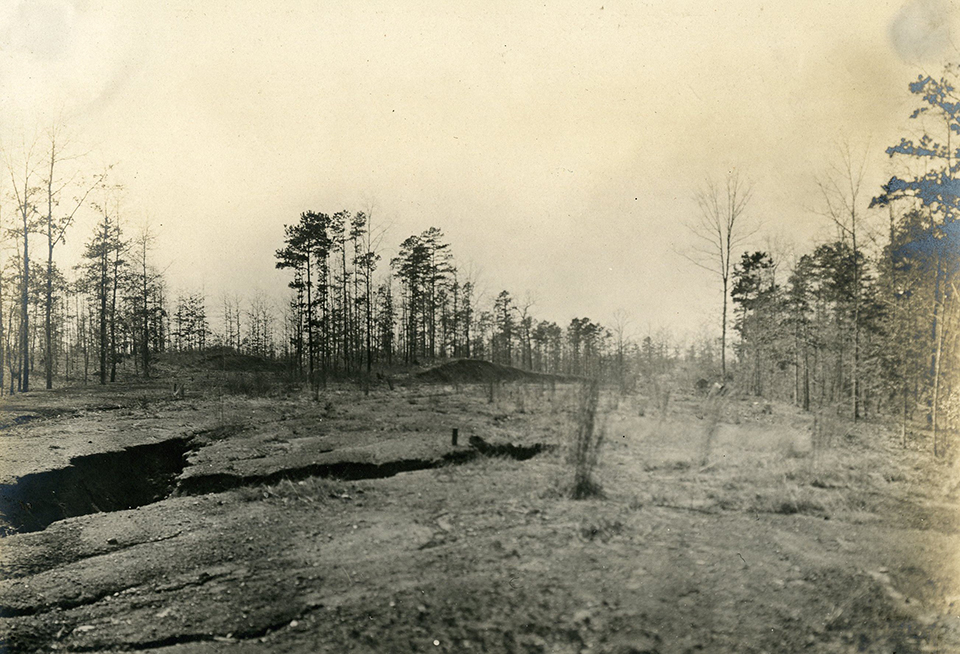 Druid Hills Tract Prior to Construction, Atlanta, Georgia, 1902. Photo by John Charles Olmsted. Courtesy of Frederick Law Olmsted National Historic Site.
Druid Hills Tract Prior to Construction, Atlanta, Georgia, 1902. Photo by John Charles Olmsted. Courtesy of Frederick Law Olmsted National Historic Site.
The Panic of 1893 forced Hurt to put the project on hold and two years later, Fredrick Law Olmsted, Sr., retired. In 1902 John Charles Olmsted resumed the work, collaborating with Fredrick Law Olmsted, Jr., under their firm the Olmsted Brothers. Their updated plan of 1905 for Hurt’s community captures the layout and configuration for the parks and subdivided lots in the 1,400-acre residential development that commenced construction at this time. The updated plan retained many elements of the previous, notably Ponce de Leon Parkway (now Ponce de Leon Avenue) and its six public parks—five of which were named, as Olmsted, Sr., intended, after natural features. The 22-acre park on the eastern end was dubbed Deepdene for its steep sides that slope towards a tributary of the Peavine Creek. Located near the top of a watershed, the creek flows into Peachtree Creek to the north. Traversed by curvilinear footpaths, the Picturesque Deepdene encompasses rugged topography and a remnant old growth Piedmont Forest, while the other five parks offer open vistas and gentle slopes. As Olmsted, Sr., envisioned, the parkway encircles Deepdene, effectively preserving the wooded ravine.
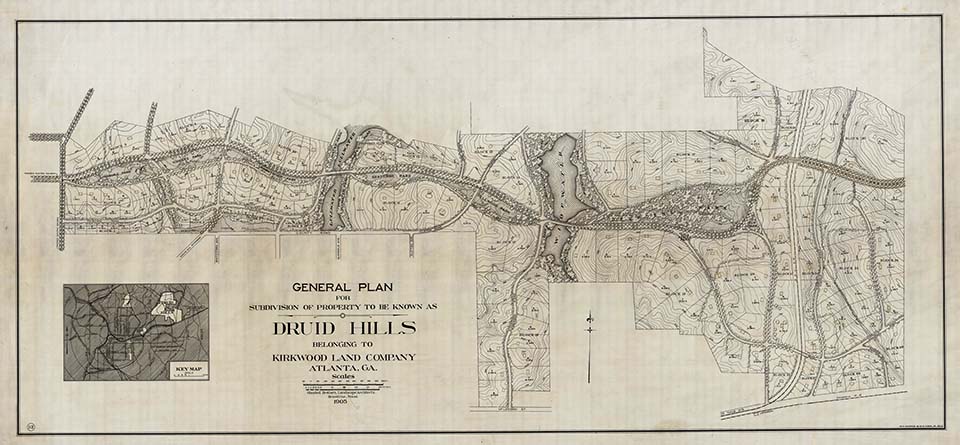 General Plan for Druid Hills, Atlanta, Georgia, 1905. Image courtesy of Frederick Law Olmsted National Historic Site.
General Plan for Druid Hills, Atlanta, Georgia, 1905. Image courtesy of Frederick Law Olmsted National Historic Site.
In 1908 financial difficulties forced Hurt to sell his interests to a syndicate, whose members included Asa Griggs Candler, the founder of Coca-Cola Company. Budget concerns and a changing real estate market forced the Druid Hills Company to modify or abandon aspects of the Olmsteds’ plan. Though elements of the Ponce de Leon corridor were implemented much as the Olmsteds envisioned, some alterations were made. In 1915 Candler relocated the main campus of Emory University to 631 acres north of the neighborhood; construction of the Druid Hills community continued until 1936. In 1939 a group of local civic and business leaders established a non-profit organization, Fernbank, Inc., to preserve 65 acres of old-growth Piedmont forest that lies just north of the linear parks.
Deepdene, which represents approximately half of the total acreage of the six linear parks, remained relatively unaltered until the 1960s when increased urbanization and changes in land use regulations posed a threat. The practice of burning yard waste was banned, allowing unwanted seeds and plants that otherwise would have been incinerated, to migrate to the park. The increased use of leaf blowers accelerated the spread of non-native plants, including English ivy and wisteria, into the oak-hickory-dominated forest.
Deepdene, along with portions of the related linear parks, were threatened by an expressway, proposed in 1961. Though Ponce de Leon Avenue (along with the 45 acres of connected parks) and the Druid Hills Historic District were listed in the National Register of Historic Places in 1975 and 1979, respectively, several groups advocated for the construction of the roadway, which would provide four-lane access to the proposed Jimmy Carter’s Presidential Library and Museum on Copenhill. Several local groups opposed the project, and vehemently advocated against it: protesting, marching, and participating in acts of civil disobedience (e.g. chaining themselves to trees, climbing on cranes and bulldozers). After years of protest and litigation an agreement between the parties was reached, ceasing construction. Opponents of the expressway aimed to further protect and rehabilitate the linear parks and a master plan was prepared by Altamira with landscape architect Nicholas Quennell of Quennell-Rothschild (now Quennell Rothschild & Partners). The document recommended the creation of a non-profit to raise funds and implement the master plan, and in 1997 The Olmsted Linear Park Alliance (OLPA) was founded. Through a series of campaigns, the organization raised more than $10 million to preserve and rehabilitate the linear park.
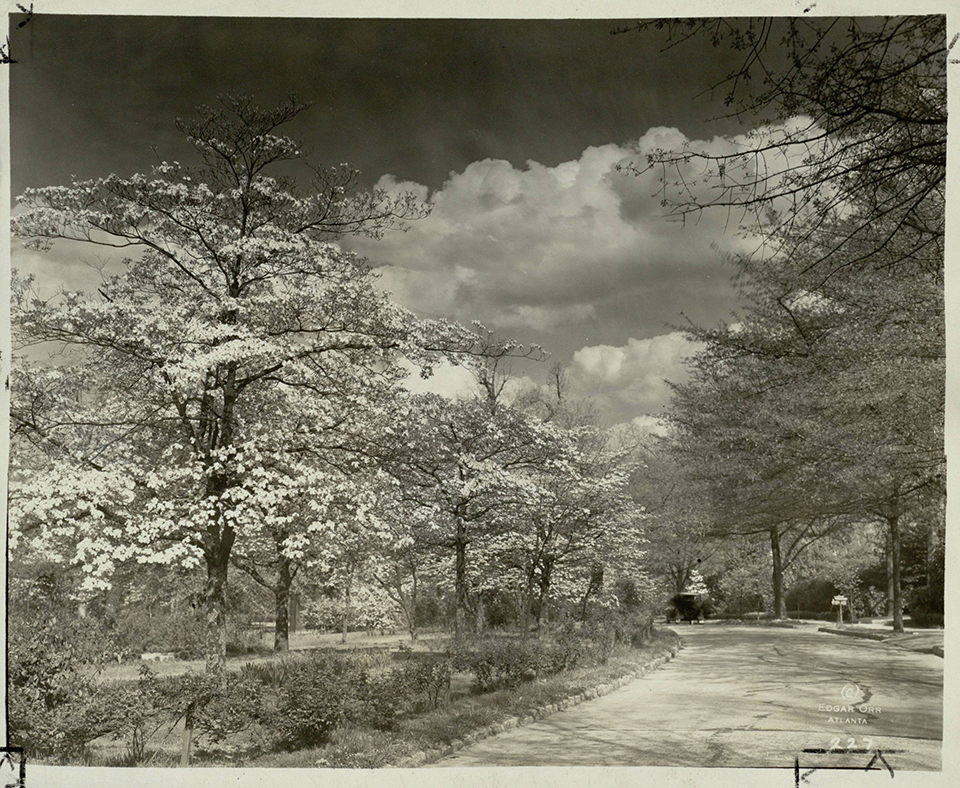 Dogwoods in Druid Hills, Atlanta, Georgia, Date Unknown, Photo by Edgar Orr. Courtesy of Special Collections and Achieves, Georgia State University Library.
Dogwoods in Druid Hills, Atlanta, Georgia, Date Unknown, Photo by Edgar Orr. Courtesy of Special Collections and Achieves, Georgia State University Library.
The OLPA initially focused on the five Picturesque parks before concentrating on Deepdene, which has been owned by Fernbank, Inc., since 1976 and is currently leased to the DeKalb County Department of Parks and Recreation. After turning their attention to Deepdene, the OLPA addressed the severe erosion in “The Vale,” located in the park’s southeastern portion near Ponce de Leon Avenue. Tunnell & Tunnell Landscape Architecture led the effort to restore a stream with a series of pools and riffles, stabilizing slopes and planting species adapted to thrive in wet conditions. Completed in 2011, utility lines along Ponce de Leon Avenue were buried, eliminating the need to routinely cut back the forest edge. Additionally, granite and wood bridges were constructed throughout the park, mitigating erosion and allowing pedestrians to safely traverse the rugged topography.
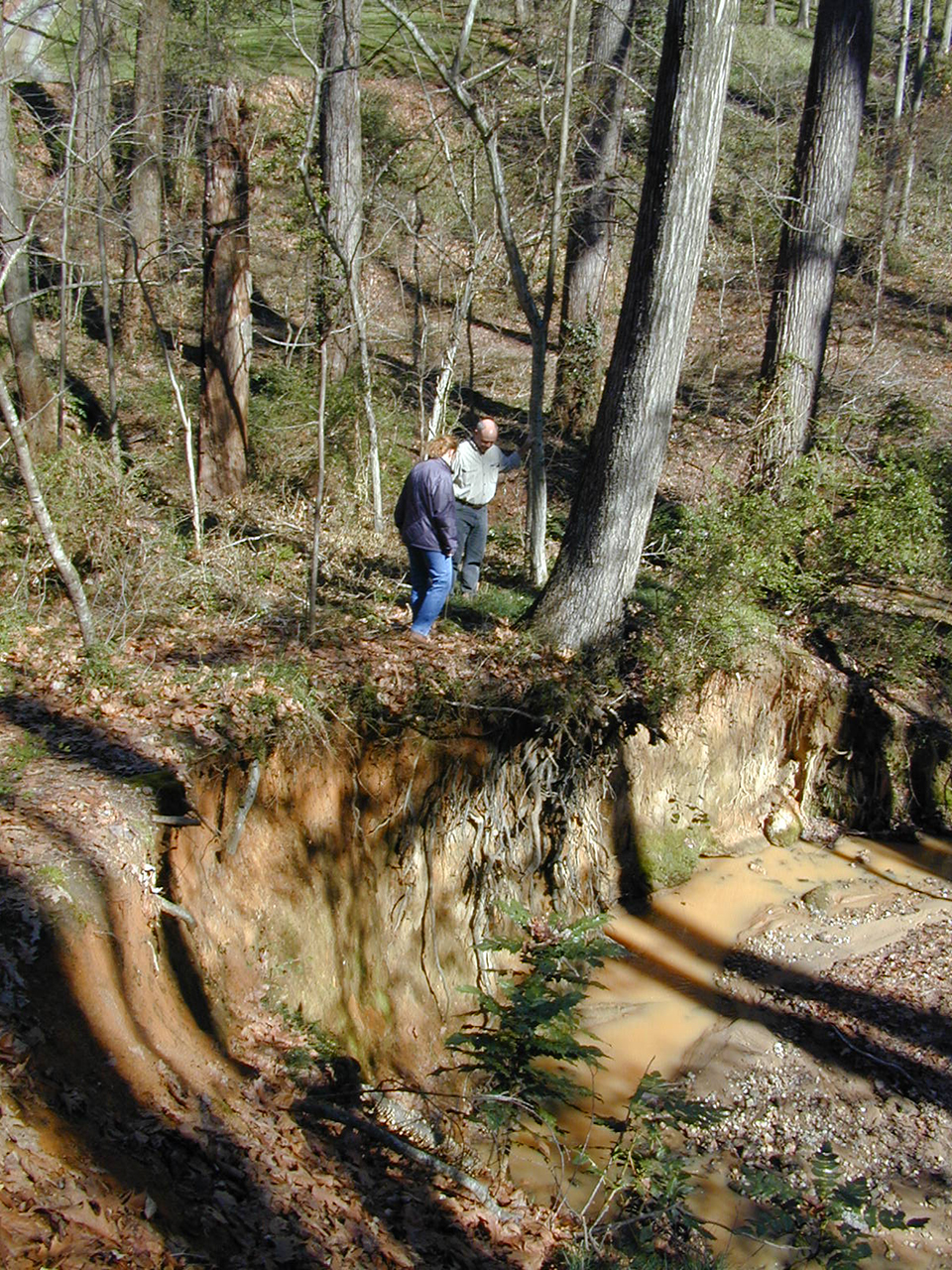
Photo courtesy of Tunnell & Tunnell Landscape Architecture.
Threat
In the early 2000s, the Georgia Department of Transportation (GDOT) planned to install curb inlets along the Promenade (the stretch of Ponce de Leon Avenue that borders the south edge of Deepdene Park), designed to divert stormwater from the road directly into the park, which would increase the risk of erosion and flooding therein. Following concerns voiced by the OLPA, GDOT revised the plan, proposing instead to redirect stormwater into an underground pipe to be released downstream of Deepdene. While the plan was put on hold, OLPA used GDOT approved grants to plant trees, install light fixtures, and bury utility/power lines, which eliminated the routine practice of cutting back the forest edge along the Promenade. GDOT resumed planning for a drainage solution along the corridor in 2017. When doing so, GDOT indicated that the previous improvements were not aligned with current strategies and that trees and infrastructure would be impacted. Over the last five years, various proposals have been presented by GDOT to address roadway drainage but to date all proposals would negatively impact Deepdene’s stream corridor by creating additional flooding and erosion.
What You Can Do to Help
This is a pivotal moment for Deepdene. It has been five years since GDOT made their last proposal which was tabled. There is a critical need to further explore/develop design strategies with key stakeholders to ensure that any proposed solution will address road drainage without negatively impacting the stream and its associated watershed.
• Adopt and advance a spirit of cooperation between GDOT, Fernbank, OLPA, and DeKalb County. There is great reason for hope—and a fruitful dialogue has been started.
• Volunteer with OLPA to further preserve and protect Deepdene Park.
• Attend OLPA events that highlight the importance and significance of Deepdene and the linear parks.
• Email OLPA or call (404-377-5361) to advocate for a cooperative approach that:
1. Support a holistic solution for Deepdene Park’s watershed and associated drainage that does not have an adverse effect on Deepdene’s historic Olmsted design
2. Recognizes that Deepdene Park is at the headwaters of a large drainage basin for Peachtree Creek and directly affects water resources in Fernbank Forest, the Druid Hills Golf Club, the South Fork Conservancy of Peachtree Creek, and the Chattahoochee River
3. Supports and honors the cooperative relationship between GDOT and the OLPA
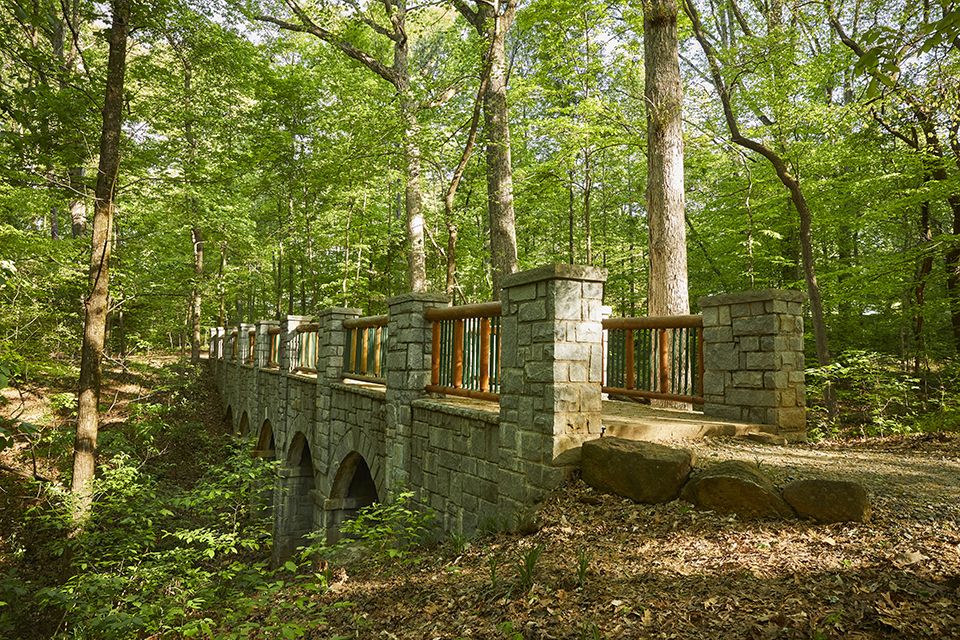
-
Photo by Emily Followill.
